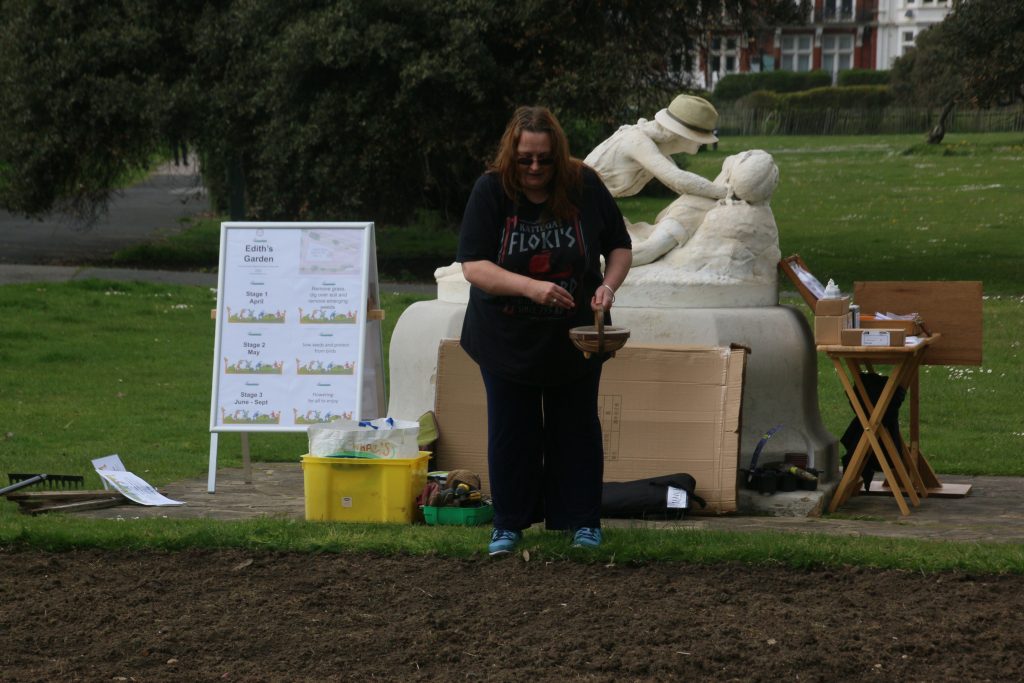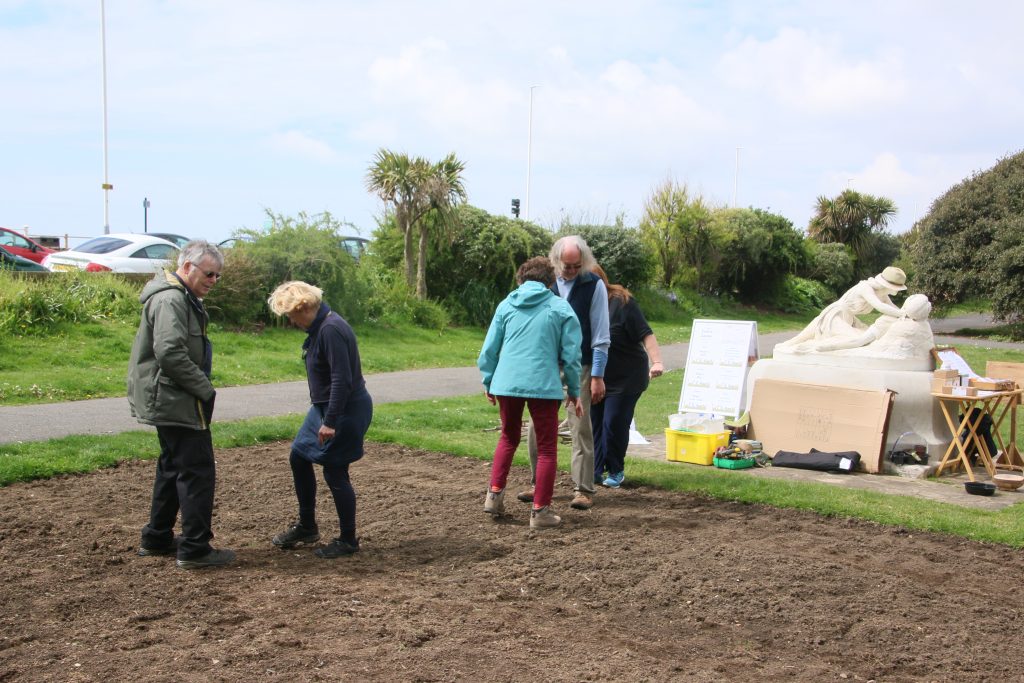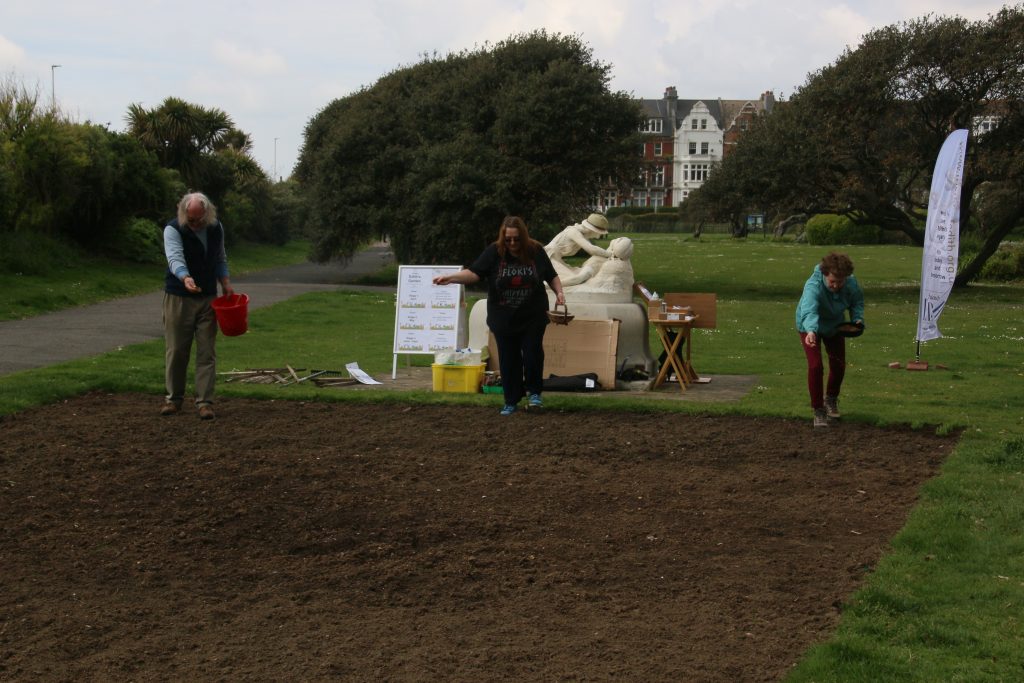This morning, I went to a wildflower sowing, for want of a better title of the event. This was a good example of how to encourage and plant wildflowers, why it’s important to properly research and audit the area before planting, and why ‘seed bombing’ can be at best superficial and pointless, and at worst, ecologically damaging.
There were quite a few of us at the event, including Maya Evans (Hastings Council lead councillor for environment), local environmental campaigner Anna Sabin, Andy Phillips, a local ecological consultant, along with Ian Jarman and others from ‘Friends of Edith’, a local group whose aim is to enhance the area in Grosvenor Gardens around the statue of King Harold and Edith Swanneck.
-

Volunteers sow seed -

Treading down the seed -

Volunteers sow seed -

Edith Swanneck and King Harold, with added hat.
The project aim is to grow a wildflower bed in Grosvenor Gardens, between the statue and the toilets. Andy Phillips has been helping the Friends of Edith, advising them on how to go about it. The first stage was to carry out an ecological audit of Grosvenor Gardens, to asses what plants would be of most benefit to the local fauna and ecosystem. This audit was interesting, as it revealed that the gardens are home to the rare four-banded flower bee. Using information from the audit, Ian and his local volunteers worked with Andy to select a custom mix of 36 native wildflower seeds, chosen to be tolerant of maritime locations, so resistant to drought, salt and wind, giving a range of flowering times through the year, and suitable for sowing at this time of year.
The soil under the Grosvenor Gardens lawns was surprisingly good, considering it had been covered with grass for over a hundred years. They dug and raked it to a good, fine ‘tilth’, and then this morning, we all helped sow the seed and tread it in. Treading the seed in is important as it mimics the effects of larger animals in a natural setting, stops it blowing away, and pushes it into the soil. There was a small flock of pigeons looking on hopefully, but the area will be surrounded by rather less natural fencing and netting, to make sure the seed doesn’t all get eaten.
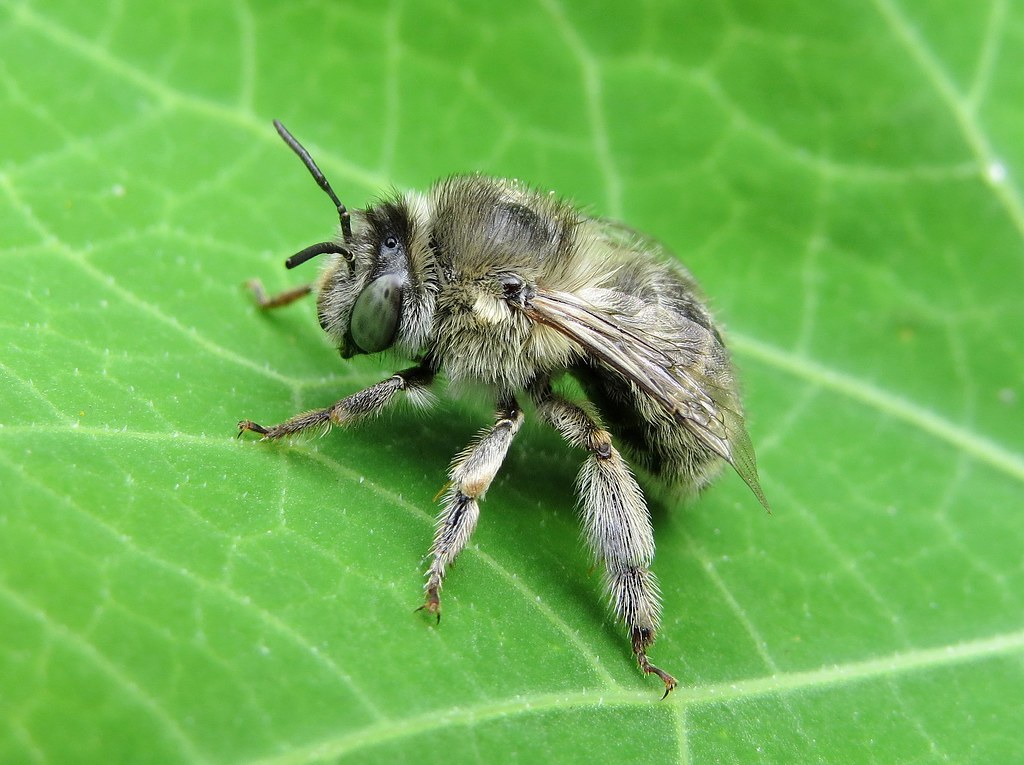
The local volunteers will now keep the area regularly watered (if the rain stops) and, as the plants start to grow, will carry out further audits to check whether all 36 species have germinated, and whether they all survive. Inevitably, some flower species will dominate, and the bed might need future attention to stop the more ‘thuggish’ species dominating, although as time goes by, a natural mixture of some, if not all, of the 36 species will become established. The volunteers will also be planting salvias, a group of plants that includes common sage, and catmint, both of which are salt-tolerant, and are a favourite food source of the four-banded flower bee.
This is the right way to go about establishing wildflowers: proper research into what grows in the area and what established fauna needs, proper choice of a mix of suitable seed, and a long-term programme to monitor and maintain the area. Getting groups of people together to ‘seedbomb’ an urban space without the necessary background research, species auditing, and long-term maintenance plan could do more harm than good, especially if ‘untidy weeds’ were dug out first. At best, it’s unlikely that many of the seeds will grow. At worst, the ‘untidy weeds’ could have been plants that were a necessary part of the local ecosystem, to be replaced with ones that aren’t.
After treading in the seeds, Andy took us to look at a rather different wildflower meadow, that’s been gradually establishing over the last 20 years. This is on the bank that leads up to TK Maxx in the Bexhill Road Retail Park, from Bexhill Road. That area has become well-established with wild flowers. At the moment, there are ox-eye daisies, alexanders (which I know as horse parsley), field buttercups, red clover, yarrow, sedge, vetch, cranesbill, hoary cress, and much more. And next month, there will be orchids in flower; bee orchids and pyramidal orchids have become well-established in the bank.
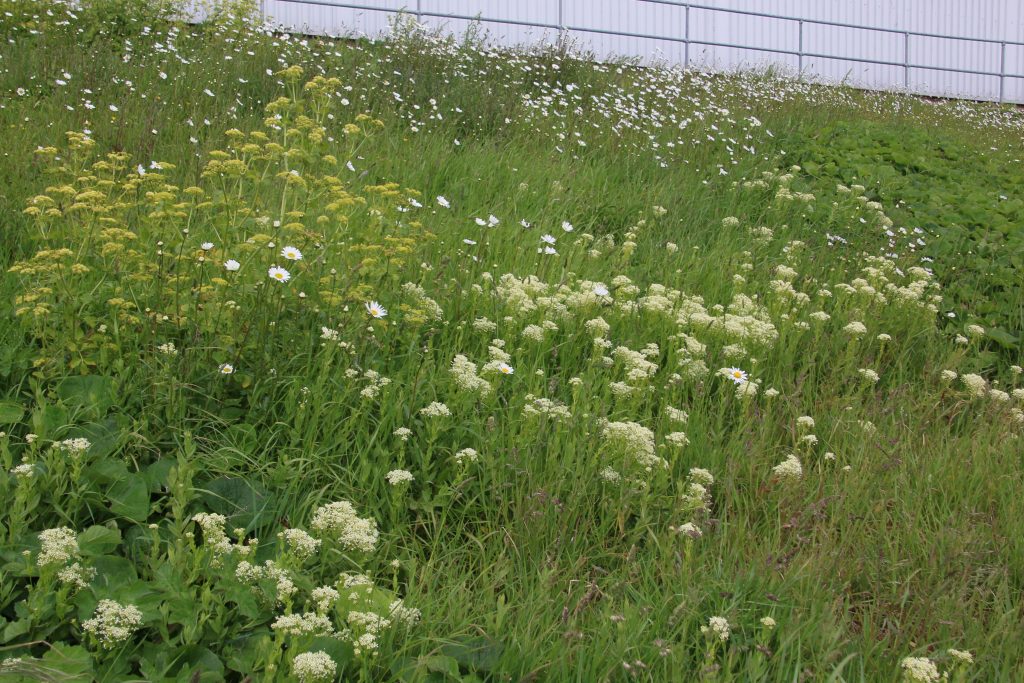
However, no-one ever planted this meadow. The bank was created from spoil when the retail park was built, covered with a thin layer of soil and, as far as I remember, turfed. Needless to say, the slope was too dry and the soil too poor for turf to grow. So over the years, the wildflowers have established themselves naturally. And because it’s happened naturally, these plants are all ‘the right plant for the right place’, and support the local fauna too – amongst many insects, bees and butterflies, there are now slow worms living there. Nature has done the work here, establishing a thriving ecosystem with no human intervention at all.
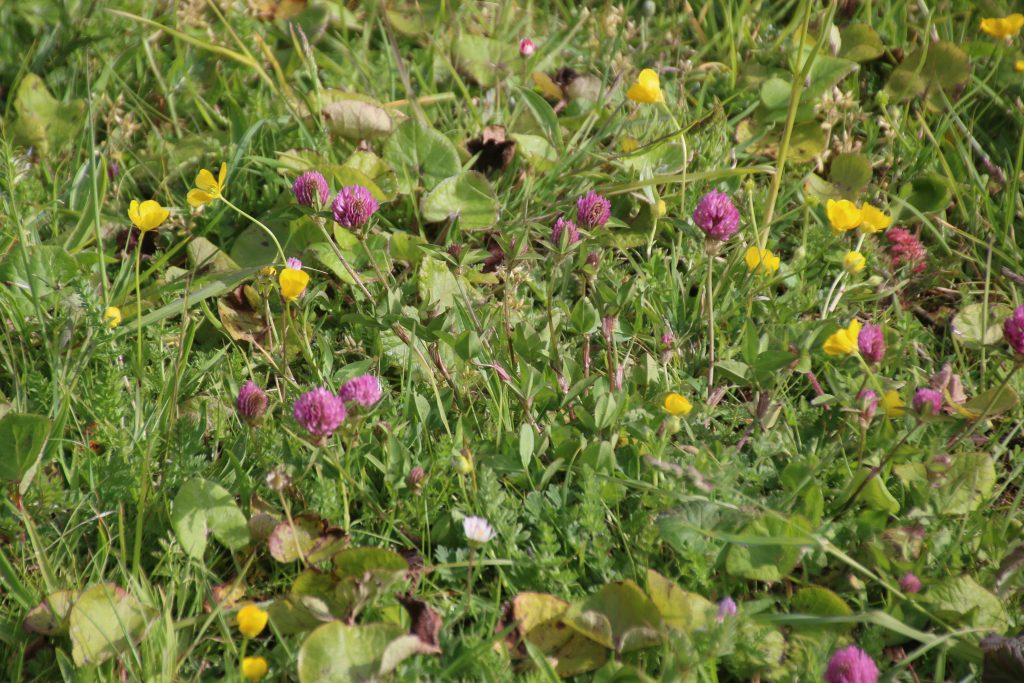
And that’s the key to it really. Leave a bit of land alone and it will establish its own ecosystem, with the right plants growing in the right place. But if you do want to help nature along, make sure you do your research, find out what the right plant in the right place is, and help the development of natural ecosystems rather than hindering or destroying them. But please, no indiscriminate scattering of random seeds. Make sure your interventions are properly researched, and enhance our local ecosystems rather than doing them harm.

